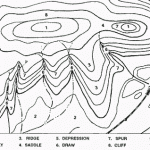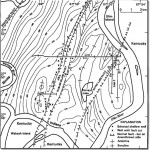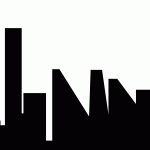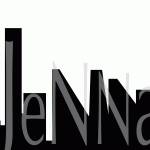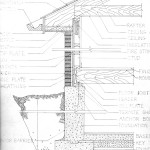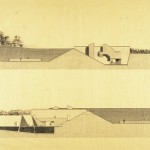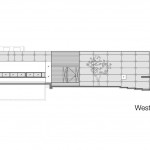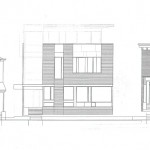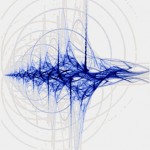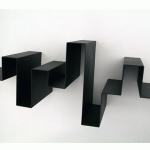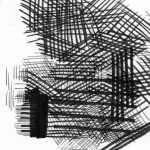Aural Topographies : Visualizing Sound
Problem: Create black and white compositions using networks of marks to demonstrate an understanding of visual rhythm, repetition, and pattern. These compositions will attempt to visualize sounds and music and uncover the relationships between what you hear and what you see.
Limits: variations of line.
Materials: Creative Process Book, pencils, marking pens, Bristol Board 9×12″, Bristol Board 14×17”, old newspaper/magazines, scissors, exacto knife, ruler/t-square, glue.
Concepts: Line, Rhythm, Repetition, Monotony, Variety, Pattern and Texture
Technical Skills: thumbnail sketching, mark-making, draughmanship with ruler/t-square, inking pens, exacto knife and collage.
References: Anita Lillie | Design Meltdown | Wassily Kandinsky & Music
Procedure:
- Research / Inspiration (DUE Class 6)
Writing- Listen to your favorite piece of music.
- Designate a new section of your Creative Process Book and write ‘Aural Topographies : Visualizing Sound’. Compose a minimum 2-paragraph description of the sounds and patterns you hear. Imagine what these sounds look like and how they relate to each other and describe them in these terms.
- Experimentation / Iteration (DUE Class 6)
Line Networks : Monotony and Variety
- In class we will start work on two types of drawings, starting with pencil sketches in your CPB. Later you will translate your sketches into ink drawings on 9×12″ bristol.
- The first drawing will demonstrate monotony by visualizing a piece of music with very little variety and contrast. The second drawing will visualize a song or series of songs that has variety and obvious changes in meter, pitch, and volume. Both drawings will use a network of repeated horizontal, vertical, and diagonal lines to demonstrate visual pattern, repetition and rhythm. If the music ends before your drawing is finished — REPEAT.
- Monotony Line Network (LISTEN MP3): To begin this drawing, simply create a straight freehand line from top edge of the page to bottom. Continue creating the “vibrations” of this line until the entire page is filled with vertical lines. Once you get to the end, turn the paper 90 degrees and create a grid– drawing intersecting horizontal lines across the same page. [ EXAMPLE] .
- Working slowly, with intention, try to keep your lines consistent, close together, and evenly spaced (this is hard– nearly impossible, actually). Create several versions of this drawing in your sketchbook, using one type of pencil for the whole drawing- perhaps a soft pencil (2B or 4B).
- Translate this drawing to bristol, using your inking pen (brush pen might work best). Your final drawing should look like a grid, woven fabric, network of lines.
- Variety Line Network (LISTEN MP3): As soon as you hear the music, consider the sound you hear and visualize it as a line. Choose a pencil (hard or soft) and start drawing straight lines– don’t draw anything recognizable. Let your pencil move in one direction, until you hear the song change. At that moment, change the direction/angle/length/weight of your line. Notice how easy it is to create variety and how quickly your drawing become cluttered, chaotic, and confused. Let this happen.
- Create several versions of this drawing in your sketchbook, using a variety of line weights and styles (thick, thin, medium, short, long, broken). Choose to make a mark based what you “hear”. For example, if you hear a low tone, perhaps your marks should become thicker, denser or darker.
- Translate your drawing to bristol, using a variety of inking pen weights. In some parts of your drawing you may make lines so dense that groups of lines become solid shapes. In other areas, your lines may be light, thin, and sparse. [ EXAMPLE]
- With these final inked drawings make sure you take the entire page into consideration– observing figure/ground, unity, and economy, even if these principles are lacking.
- 2 Monotony Line Networks (1 final pencil in your CPB, 1 final ink on bristol)
- 2 Variety Line Networks (1 final pencil CPB, 1 final ink on bristol)
Staccato / Legato Pattern Mashup (DUE Class 7-8)
- Take out your CPB and a soft pencil #3B.
- Rhythmic Line Test 1: Listen to the first bit of this song: Another One Bites the Dust and draw a line representing its rhythm across your first sheet of paper. Repeat, until you get some interesting lines.
- Rhythmic Line Test 2: Listen to the first bit of this song: Summertime and draw a line representing its rhythm across your second sheet paper. Repeat, until you get some interesting lines.
- Patterns: Now create 12 small thumbnails- 6 for Staccato and 6 for Legato. Using your rhythm lines as a guide, create 6 patterns that represents STACCATO and 6 patterns that represents LEGATO. Continue to refine these patterns. Try varying the line weight (think and thin) and the spacing (tight and wide) between the lines. Let the rhythm of the music dictate the look and feel of your patterns. Once you have created a total of 6 strong patterns (3 Staccato and 3 Legato) move on to the next step. Refer to class pattern examples for ideas.
- Mashup: On 9×11″ Bristol create 1 final inked composition using 2-3 Staccato patterns and 2-3 Legato patterns. Even though the composition will be a field of patterns, it should feel unified. You will unite two rhythms, like a DJ mixing parts of different songs. Before you begin working, make a sketch and think about how you will arrange your different patterns on the page. How will they relate to each other? Will the rhythms complement each other or repel each other? What will it sound like?
- Expression of Form, Emotions, or Concepts
Rhythmic Elevations [FREE STUDY]
- Materials Needed: 1 sheet 14×17″ Bristol, ruler/t-square, pencils, inking pens, collage materials or materials of your choice
- For this final composition you will taking your experiments with Line, Rhythm, Repetition, Monotony, Variety, and Pattern and creating a culminating work that formalizes these experiments into a successful, stable, figure/ground relationship with an expression of emotion.
- In your sketchbook, create at least 10 thumbnail rectangles. In each rectangle, create a visual representation of the sound of your name, in same way we created representations of staccato and legato. Alternatively, you could write out your name (as you hear it) and create a line based on the letters.
- Using architectural elevation drawings as reference, transform your waveform line into an elevation drawing.
- Consider how you will create a distinction between figure and ground using only pattern fills. Your final compositions should have a variety of pattern elements that together create a sense of rhythm.
- With each thumbnail, be aware of the figure/ground relationship. Choose your most successful composition to translate to 14×17″ bristol.
- Measure a 1 inch margin all the way around a sheet of 14×17″ bristol paper and lightly sketch the contours of the composition elements/shapes.
- Using your inking pens, collage elements, or materials of your choice, create a variety of patterns in both the figure and ground areas- but keep them distinct. Types of line patterns could be made from horizontal, vertical, diagonal, organic, or a combination using inking pens, pencils, collage or materials of your choice. The goal is to develop variety of repeated “sounds” or rhythmic patterns in the composition, but still keep a successful figure-ground relationship and unity overall.
- In this exercise each pattern should be repeated at least once and should relate to its neighbors, subtly building an overall mood like a piece of music.
- Thoughtful Assessment (verbal and written)
Critique- Bring all assignment parts to class, protected in a portfolio case or protective paper or cardboard envelope.
- Be prepared to present, discuss and analyze your finished work in terms of concept, craft, what you learned, and creative process.
- State the following: your name, what you are presenting (title and design problem), which parts are successful and why, which parts are unsuccessful and why.
Written Assessment: In your Creative Process Book, at the end of the Assignment #2 section, document your thoughts about this project. Think about what you learned, what you could have done better (planning, material use, craft), and how you will apply what you learned to your next project.
- Work Hour Tally
- In your Creative Process Book, outline the hours committed for each portion of the assignment, including dates and times.
